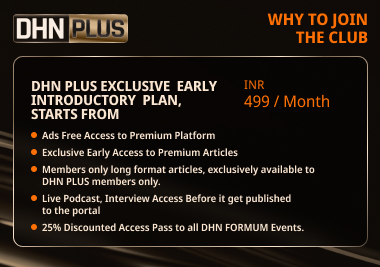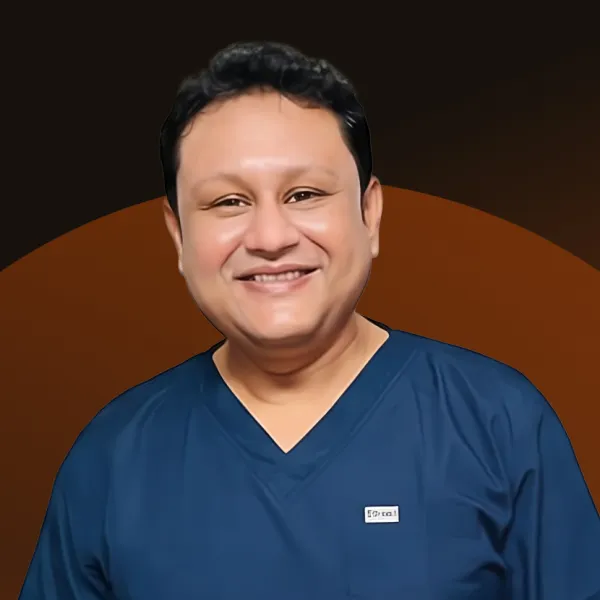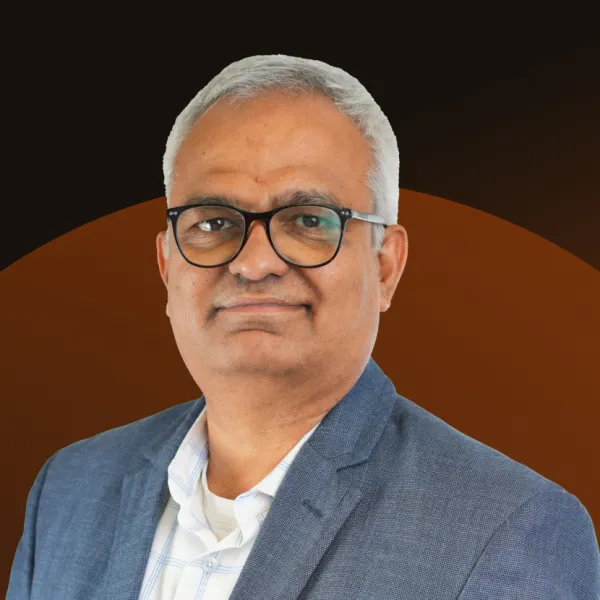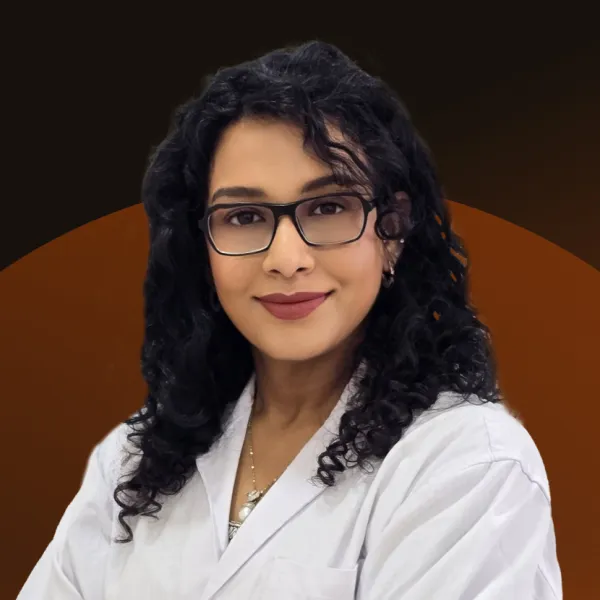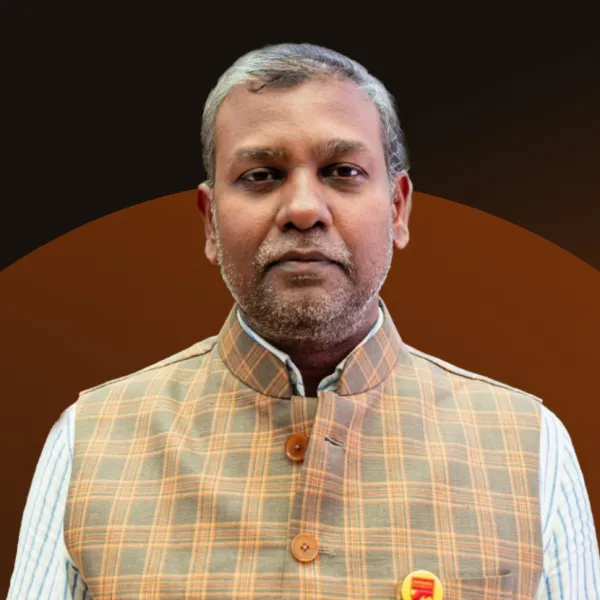The Powerful Trio: IoMT, AI/ML, and Robotics Driving Healthcare Innovation in the Future of Healthcare Delivery

By- Manish Kishore, Global Head IT, Wockhardt Ltd.
The healthcare sector is undergoing a profound transformation, characterized by the sophisticated and growing integration of the Internet of Medical Things (IoMT), Artificial Intelligence/Machine Learning (AI/ML), and Robotics. These synergistic technologies are rapidly becoming indispensable components of contemporary medical paradigms, demonstrably enhancing diagnostic sensitivity and specificity, operational efficiency through process automation, patient accessibility via telemedicine solutions, and the development of highly individualized therapeutic strategies leveraging patient-specific data analytics.
The IoMT, a specialized subset of the broader Internet of Things (IoT), specifically encompasses a diverse array of internet-connected medical devices and intelligent systems engineered for the comprehensive collection, meticulous analysis using edge computing paradigms, and secure transmission via protocols like MQTT and CoAP of critical health-related data. Furthermore, the strategic implementation of fog computing, an architectural paradigm that strategically distributes computational processing closer to the data source, is proving crucial for certain real-time IoMT applications, significantly mitigating network latency and optimizing bandwidth utilization for time-critical data streams. The subsequent sections will delve into the specifics of IoMT, AI/ML, and Robotics, exploring their individual contributions and their powerful synergistic applications in revolutionizing healthcare.
The Internet of Medical Things (IoMT): Architecting the Data Infrastructure for Healthcare
Transformation
Within the contemporary healthcare ecosystem, the Internet of Medical Things (IoMT) constitutes a sophisticated and intricate network of interconnected medical devices and advanced informatics systems. This robust infrastructure is meticulously engineered for the seamless acquisition using sensor fusion techniques, secure exchange via end-to-end encryption, and comprehensive analysis using stream processing engines of critical, patient-centric health-related telemetry. A diverse array of representative applications underscores the transformative potential of IoMT. These include:
1. Non-invasive wearable physiological sensors utilizing photoplethysmography (PPG) for heart rate monitoring, accelerometry for activity tracking, and galvanic skin response (GSR) for stress level assessment.
2. (BLE) for data transmission for proactive diabetes management. Intelligent inhaler devices equipped with flow sensors and GPS modules designed to optimize respiratory therapy and track usage patterns.
3. Ingestible smart pills with integrated microelectronics and wireless communication enabling precise drug delivery and adherence monitoring through ingestion time-stamping.
4. Implantable devices such as cardiac pacemakers with telemetry providing long-term physiological data and therapeutic interventions via RF communication protocols.
5. Increasingly accessible, user-friendly platforms utilizing RESTful APIs and secure cloud infrastructure facilitating comprehensive remote patient surveillance.
Impact:
1. Remote Patient Tele-monitoring: The deployment of IoMT-enabled devices facilitates the continuous and unobtrusive acquisition of patients' vital physiological parameters within their familiar domiciliary settings. This capability significantly mitigates the necessity for frequent and often disruptive ambulatory visits, while simultaneously empowering healthcare providers with the means for timely and accurate early detection of incipient pathological states or the subtle exacerbation of existing conditions through threshold-based alerting algorithms.
2. Enhancement of Pharmacological Adherence: The integration of intelligent medication dispensing units employing micro-pumps and barcode scanners and networked inhaler systems provides granular, real-time tracking of patients' pharmaceutical intake patterns using event logging. Furthermore, these sophisticated systems deliver timely and personalized reminders via push notifications, thereby demonstrably bolstering patient adherence to prescribed therapeutic regimens and optimizing treatment efficacy.
3. Augmented Diagnostic Precision: Diagnostic modalities seamlessly integrated within the IoMT framework acquire high-fidelity, real-time physiological data streams using high-resolution analog-todigital converters. This continuous influx of information contributes to more temporally accurate and diagnostically precise assessments, enabling clinicians to make more informed decisions. Prime examples include connected blood pressure monitors employing oscillometric methods and continuous glucose monitors offering detailed glycemic variability insights through time-series analysis.
4. Optimization of Healthcare Resource Allocation: The strategic and intelligent deployment of sophisticated IoMT sensor networks utilizing Real-Time Locating Systems (RTLS) based on UWB or RFID enables precise, real-time localization of critical medical equipment assets and healthcare personnel within facility environments. This granular visibility facilitates the dynamic optimization of inventory management protocols using predictive analytics based on historical usage, streamlines essential routine logistical tasks through automated guided vehicles (AGVs), and ultimately yields significant cost efficiencies while demonstrably enhancing overall operational throughput within resource-constrained healthcare facilities.
5. Chronic Disease Management: The enhanced connectivity via cellular or Wi-Fi networks and continuous data acquisition capabilities of IoMT devices empower proactive and comprehensive monitoring and management of prevalent chronic conditions such as diabetes mellitus (using HbA1c correlation algorithms) and cardiovascular disease (employing ECG analysis algorithms). The continuous provision of real-time physiological data to healthcare professionals enables timely, data-driven interventions, facilitating improved patient outcomes and a reduction in costly acute care episodes.
6. Telehealth and Remote Consultations: The improving communication infrastructure inherent in IoMT facilitates seamless remote consultations and the delivery of comprehensive virtual healthcare services using secure video conferencing platforms and integrated electronic health records (EHRs) via HL7 standards. This capability demonstrably expands access to essential healthcare for patients residing in geographically remote or historically underserved areas, overcoming traditional barriers of distance and limited specialist availability.
Artificial Intelligence/Machine Learning (AI/ML) in IoMT and Robotics: The Cognitive
Framework
AI/ML algorithms function as sophisticated computational engines, meticulously analyzing voluminous datasets derived from IoMT devices and electronic health records using statistical modeling and deep learning architectures to extract salient insights, forecast potential clinical trajectories through timeseries forecasting models like ARIMA or LSTMs, and provide intelligent augmentation to clinical decision support systems using rule-based systems and probabilistic reasoning. The integration of AI/ML with IoMT and robotics is pivotal for realizing their full potential. Generative AI, utilizing Variational Autoencoders (VAEs) or Generative Adversarial Networks (GANs), is also emerging, capable of creating synthetic medical data for training AI models while protecting patient privacy through differential privacy techniques.
Applications:
High-Fidelity Diagnostics: AI algorithms, particularly Convolutional Neural Networks (CNNs), analyze medical images generated by IoMT devices (e.g., connected MRI or CT scanners) to detect subtle pathological indicators with high accuracy. For instance, deep learning models demonstrate superior performance in identifying early signs of cancer in medical images acquired through IoMTenabled diagnostic equipment.
Accelerated Drug Discovery and Development: AI analyzes biological data from IoMT-based research tools, employing natural language processing (NLP) on research papers and knowledge graphs, to identify promising drug candidates and predict their efficacy using quantitative structureactivity relationship (QSAR) models. Machine learning algorithms can analyze real-time physiological data from IoMT-connected clinical trials to predict drug response in different patient subgroups using survival analysis and clustering algorithms.
Precision Medicine Initiatives: AI analyzes patient-specific data from IoMT wearables and implantable sensors, integrating genomic data analysis using algorithms like GWAS with continuous physiological data using Bayesian networks, to tailor therapeutic strategies. By integrating genomic data with continuous physiological data from IoMT devices, AI can personalize drug dosages using pharmacokinetic/pharmacodynamic (PK/PD) modeling and treatment regimens.
Proactive Risk Stratification and Predictive Modeling: Machine learning models, such as logistic regression, support vector machines (SVMs), and random forests, analyze IoMT data to identify patients at high risk for specific conditions, enabling preemptive interventions. For example, AI can analyze patterns in vital signs from IoMT wearables using anomaly detection algorithms to predict impending cardiac events.
Intelligent Automation of Administrative Processes: AI-powered virtual assistants employing natural language understanding (NLU) and dialogue management systems streamline administrative tasks related to IoMT data management and patient scheduling. NLP integrated with IoMT platforms can automate appointment reminders and follow-up communications via SMS and email using rulebased and intent recognition systems.
Enhanced Clinical Decision Support Systems: AI algorithms synthesize and analyze IoMT-derived patient data using knowledge-based reasoning and machine learning classifiers to furnish clinicians with evidence-based recommendations. AI can provide real-time alerts to clinicians based on critical changes in patient data from IoMT monitoring devices using complex event processing (CEP) engines.
Continuous Physiological Surveillance: AI algorithms analyze real-time data streams from IoMT wearables using signal processing techniques like Kalman filtering and machine learning-based anomaly detection to detect subtle physiological perturbations indicative of emerging health anomalies. AI can identify early indicators of infection or deterioration by analyzing trends in IoMT-collected vital signs using time-series forecasting and change point detection algorithms.
Intelligent Virtual Assistants and Chatbots: AI-powered conversational agents integrated with IoMT platforms, utilizing deep learning-based language models like BERT or GPT, address routine patient inquiries and provide real-time support based on collected data. Chatbots can access and interpret data from IoMT devices via APIs and knowledge bases to provide personalized health advice.
AI-Enhanced Robotic Surgery: AI algorithms analyze preoperative IoMT imaging data using 3D reconstruction and segmentation algorithms to provide real-time guidance and enhanced decisionmaking capabilities to surgical robotic platforms. AI can assist robotic surgeons by providing real-time feedback on tissue characteristics identified through IoMT sensors using computer vision and tactile sensing data fusion.
Personalized Robotic Rehabilitation: AI algorithms analyze data from IoMT sensors worn by patients during robotic-assisted therapy using reinforcement learning algorithms to dynamically adjust treatment parameters. Machine learning models can optimize rehabilitation exercises based on realtime biomechanical data from IoMT wearables (e.g., inertial measurement units - IMUs) used in conjunction with robotic rehabilitation devices.
Robotics in IoMT-Enabled Healthcare: The Mechanized Intervention Arm
The domain of robotics in healthcare increasingly leverages IoMT data for enhanced functionality and autonomy.
Use Cases:
1. Robot-Assisted Surgical Interventions: Surgical robots utilize real-time data from IoMT sensors on the patient (e.g., force sensors, optical coherence tomography - OCT) to enhance precision and safety. Intraoperative data from IoMT devices can provide robots with real-time feedback on tissue perfusion or nerve proximity using sensor fusion and real-time control algorithms.
2. Robotics in Rehabilitation Medicine: IoMT sensors (e.g., electromyography - EMG, motion capture systems) track patient progress during robot-assisted therapy, providing data for AI-driven adjustments to treatment plans using adaptive control algorithms and trajectory optimization. Wearable IoMT sensors provide data on range of motion and muscle activity, allowing robotic rehabilitation systems to adapt exercises.
3. Automated Pharmaceutical Dispensing and Material Handling: Robots in IoMT-enabled hospitals use real-time inventory data from RFID tags and patient information from EHR systems accessed via secure APIs for efficient dispensing and delivery. IoMT-connected medication cabinets and patient identification systems ensure the right medication is delivered to the right patient by robotic couriers utilizing path planning algorithms.
4. Autonomous Environmental Decontamination: Robots in smart hospitals use IoMT data on contamination levels from environmental sensors to optimize cleaning schedules using coverage path planning algorithms. IoMT sensors can identify high-risk areas for infection, directing autonomous cleaning robots to those locations.
5. Socially Assistive Robotics: Future applications may involve social robots using IoMT data from wearable emotion recognition sensors and physiological monitors to personalize interactions and provide better support using affective computing algorithms and natural language generation. Social robots could monitor a patient's emotional state via IoMT sensors and tailor their interactions accordingly.
The true transformative potential lies in the increasingly close integration of IoMT, AI/ML, and Robotics, creating a closed-loop system where data acquisition, intelligent analysis, and precise physical intervention are closely integrated. Fog computing plays a critical role in this integration by enabling real-time processing of IoMT data close to the source using distributed AI algorithms, which is essential for time-sensitive applications like robotic surgery and remote patient monitoring. This synergy allows for more adaptive and personalized healthcare interventions, moving towards a more proactive and predictive model of care leveraging digital twins and simulation environments.
Addressing Challenges and Charting the Future Course
The challenges remain consistent, with a strong emphasis on data security using blockchain technology and federated learning, and interoperability within the expanded IoMT ecosystem using standardized data models like FHIR. Ethical considerations, algorithmic bias mitigation using fairness metrics and explainable AI (XAI), and the digital divide are also critical in ensuring equitable access to these advanced, data-driven healthcare solutions. Furthermore, the integration of these technologies must address the complexities of managing and securing the vast amounts of sensitive patient data generated by IoMT devices using anonymization and pseudonymization techniques. The development of robust data governance frameworks and standardized data exchange protocols will be crucial for realizing the full potential of this integrated landscape. The integration of IoMT further amplifies the power and complexity of AI/ML and robotics in healthcare, paving the way for more proactive, personalized, and efficient medical interventions. The future of healthcare will likely see even tighter integration of these technologies, with fog computing facilitating real-time data processing and AI driving increasingly autonomous and intelligent robotic systems capable of delivering more precise and individualized care, potentially through human-robot collaboration frameworks.
Disclaimer: This article provides a general overview of the potential of IoMT, AI/ML, and Robotics in healthcare. The applications, use cases, algorithms, and technical terms described herein are based on current research and trends and may not reflect immediate real-world availability or implementation. Readers should consult with healthcare professionals and technology experts for specific guidance and information related to these technologies. The information presented should not be considered medical advice.
The Emergent Synergistic Paradigm
Stay tuned for more such updates on Digital Health News




